
As an amateur golfer, I am always on the look out for ways that I can improve my game - so when the chance to attend a tee to green masterclass with one of the best coaches in the industry came along... I was quick off the mark to jump at the opportunity.
I spent plenty of time over the course of the last year working on my fundamentals, drilling the perfect golf grip, alignment and how far to stand from the golf ball, maintaining a straight left arm in the golf swing and understanding the correct ball position with every club.
After seeing some initial improvement, I was keen to put those key factors into play and take my game to the next level... and that's where Golf Monthly Top 50 Coach Steve North came in.
In this article, we share Steve's six transformative tips that I learned during his tee to green masterclass, in a bid to help you play your best golf this season...
Tee To Green Golf Masterclass: Steve North's Expert Tips
When I give playing lessons, it always strikes me how quickly recreational golfers can show improvement with a few simple pointers and words of advice. Without getting hugely technical, various course strategy tips can go a long way to helping players shoot lower scores.
I was reminded of this recently when I played a few holes with my co-author here, Barry Plummer, a keen and relatively new golfer who has a lot of potential. I believe Barry learnt a lot from playing Turnberry on a cold, wintry day and, on the back of our playing lesson, I’m sure you can too.
Over the course of this article, I’ll be showing you how to tidy up your game from tee to green. If you’re just returning from a winter break, this is sure to help you quickly shake off that early-season rust.
1. Tee Shots
Assess the task
Teeing the ball up before fully assessing the characteristics of the hole ahead is one of the most basic mistakes a golfer can make. Even if it’s a course you’re familiar with, be sure to look down the hole before you peg it up, as this can really help you to visualise the kind of shot you’re looking to play.
Use the whole tee box
A lot of club golfers are quick to tee the ball up in the centre of the tee box, instead of really using the whole area to their advantage. If you fade the ball, tee it up on the right side of the tee box and aim down the left side of the fairway; if you draw the ball, tee it up on the left side and aim down the right side of the fairway. This opens up the hole and gives you the best chance of finding the short stuff with your natural shot shape.
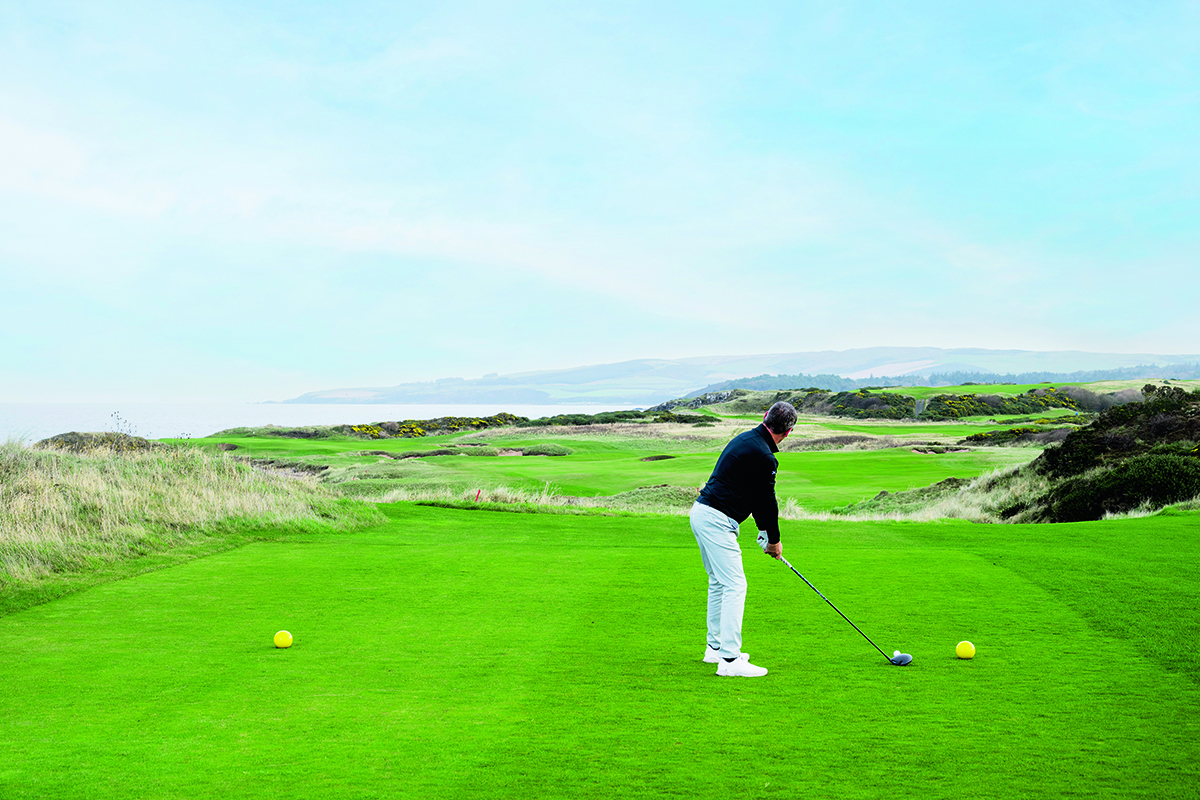
2. Fairway Woods and Hybrids
Read the lie first
So, you’ve hit your driver well enough but you’ve landed in the rough. Forget distance and what club you need for a few moments. What you must do before anything else is assess the lie - it determines everything. Now, what’s realistic? Do you have the green light to go for the green? How will the lie affect the flight?
Adapt your setup to suit the lie
When the ball is sitting down in the rough as here, it’s going to come out with lower spin and won’t carry as far. The bunker up ahead could be in play, so a lay-up might be sensible. However, if you know you can carry it, you may still have a chance of reaching the green.
From this type of lie, the ball is going to land with quite a bit of release. I would move the ball position slightly further back in my stance, with a swing thought of creating a more descending blow, as I have to ‘get into’ the lie a little more than when it’s sitting cleanly.
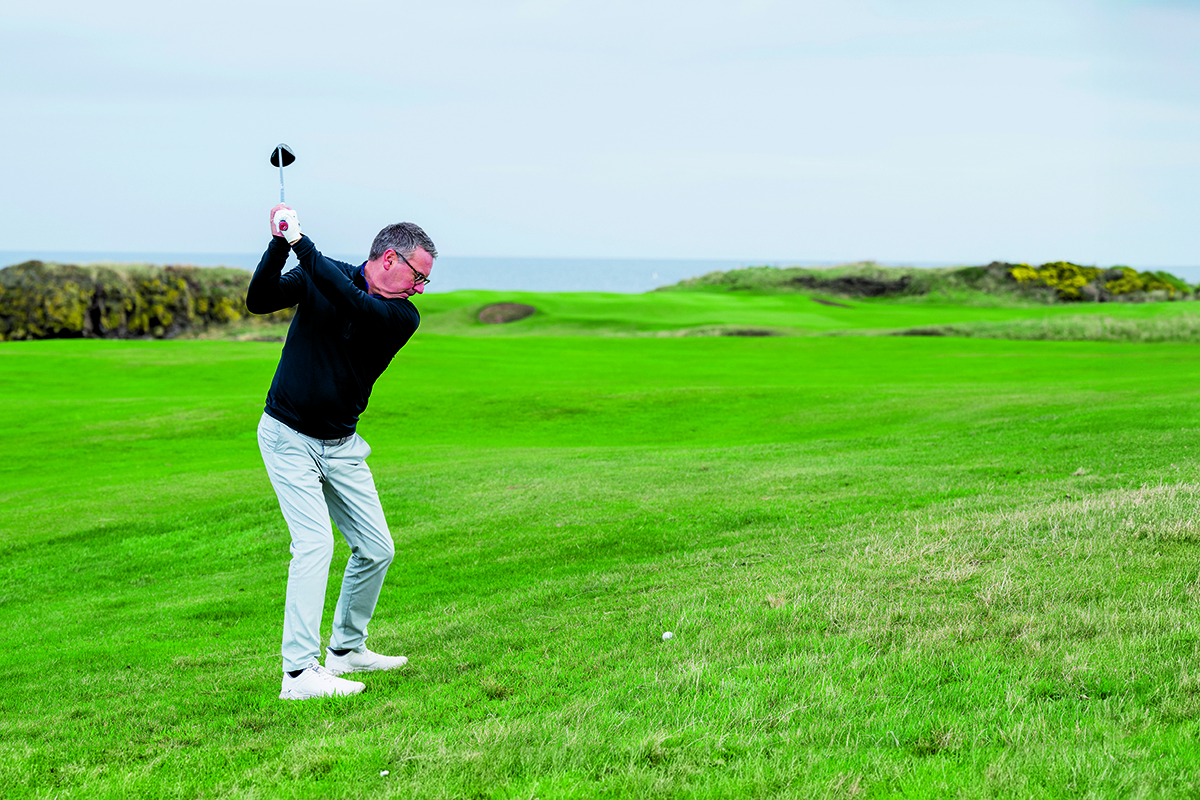
3. Iron Play Tips
The Punch Shot
Being able to ‘punch’ your irons in windy conditions is a great asset to have, especially if you play a lot of links golf. If you’re playing into the wind, take an extra club, put the ball back in your stance, and get your weight and hands forward. You’re going to ‘squeeze’ the launch out low – that’s a good thought to have. By doing this, you’ll take spin off the ball to stop it climbing into the air and coming up short.
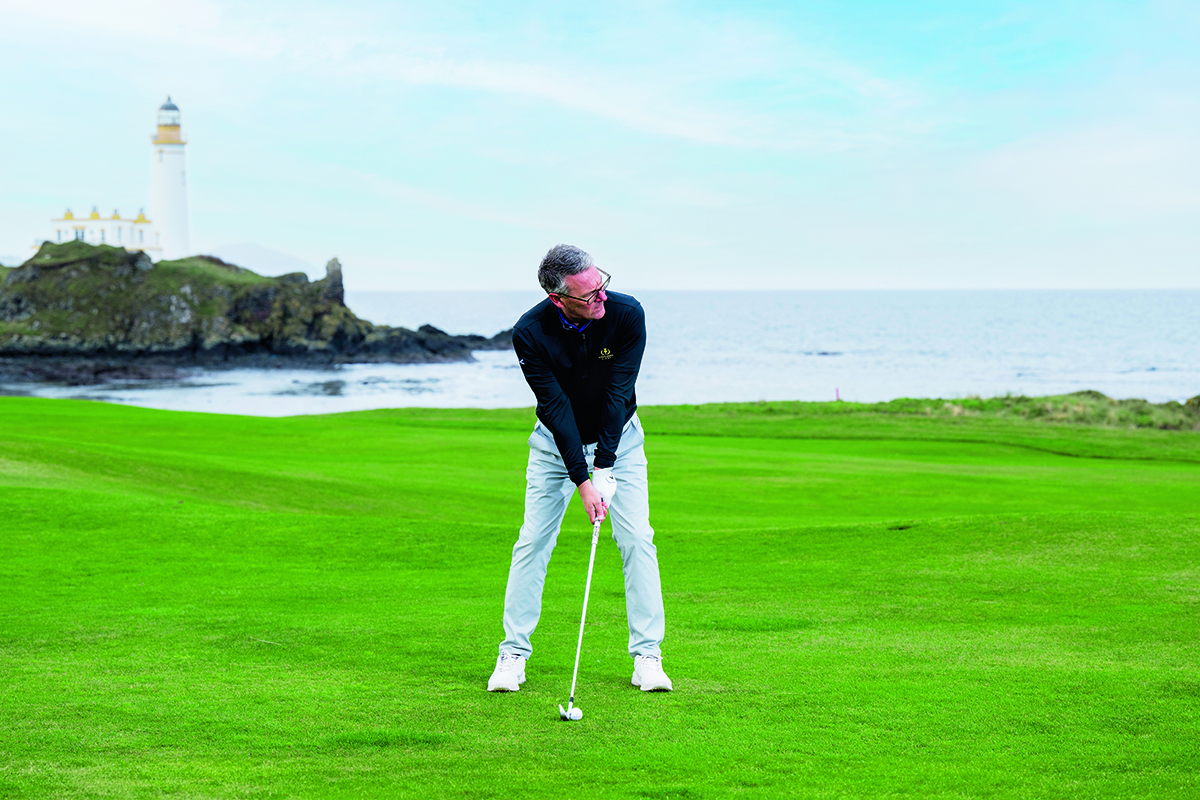
Different shots for different lies
You have to be able to adapt and hit different shots over the course of a round. Here, I’m facing a downhill lie over a bunker. In this situation, a lot of mid- to high-handicappers panic and lean back in an effort to get the ball in the air, which normally means the club bottoms out too soon, causing heavy shots.
Much like the punch shot, get the ball back in your stance, your weight forward onto the front foot and your hands forward, too. You need to ‘follow’ the slope. The ball is going to come out on a lower trajectory than on a regular shot, something you should also take into account.
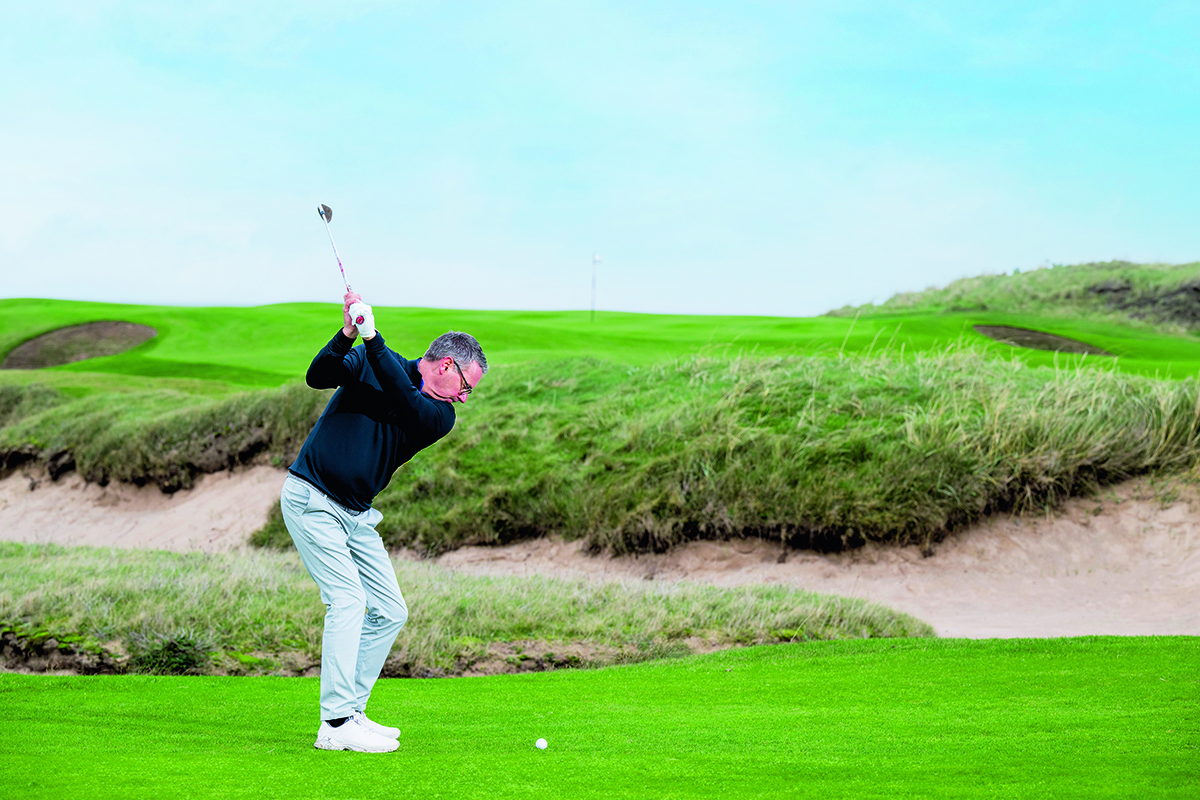
4. Chipping Tips
The ‘safety first’ bump-and-run
Sometimes you have no choice but to use lots of loft, but every golfer should learn how to play a bump-and-run – it’s really easy and can be such a reliable play. Position the ball more off your right instep, get your hands forward at set-up and feel as though your knees are ‘pinching’ forward a bit more. I’m going to get the ball running on the ground as soon as possible here using a 9-iron. There’s far less for me to think about – it’s all about practice and judging the amount of roll.
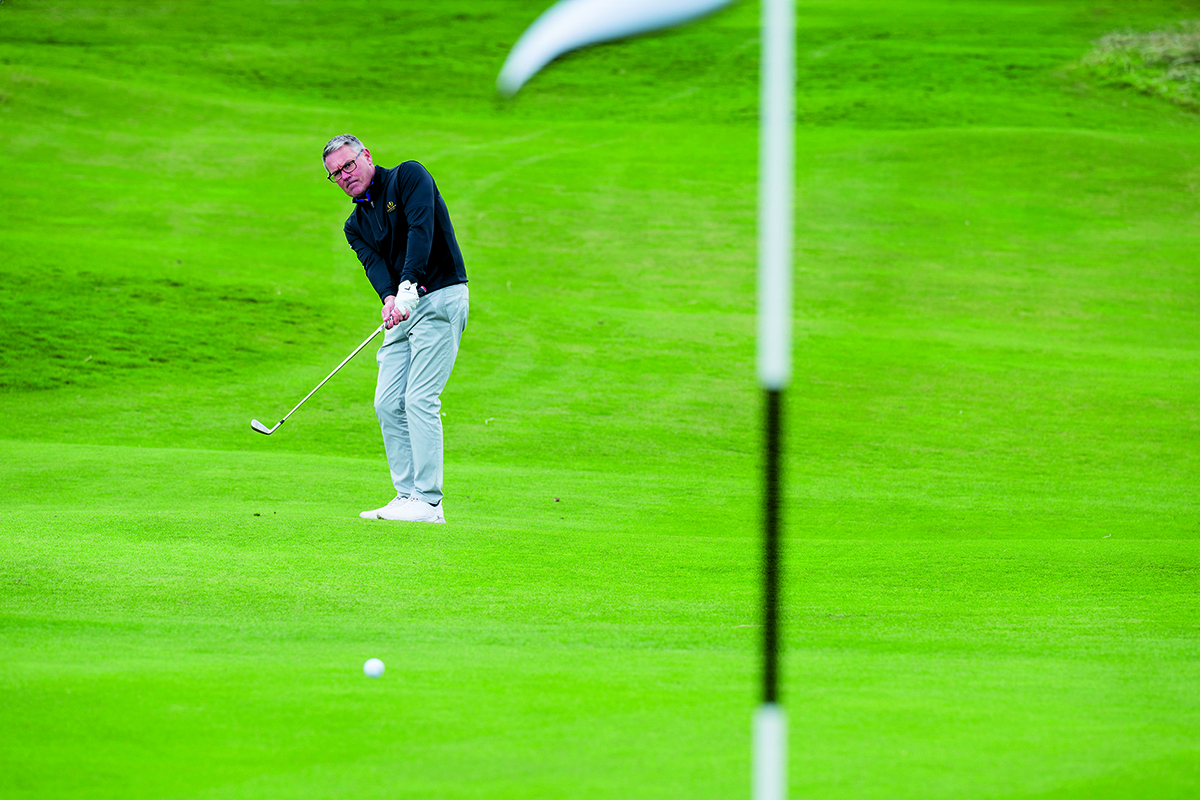
5. Bunker Play
Angle of attack
For a standard greenside bunker shot, I like to see the body slightly open to the target – that’s feet, hips and shoulders, with the weight sitting into your lead side. Get your hands forward and slightly lower than normal and position the ball opposite the lead heel.
These basics at set-up all help to promote the desired angle of attack.
I would also recommend turning out your lead foot a touch to encourage you to get through the ball. The more loft you have, the easier it will be to achieve a higher launch angle on the shot. More loft equals more bounce on the club, which will help it to slide underneath the ball.
Consistent point of entry into the sand
I always encourage golfers to practise entry point. I aim to hit a couple of inches behind the ball, and I don’t tend to vary that unless a specific shot requires it. Being consistent with your entry point means you’ll become better at controlling your distance. You can then vary the speed of your swing to propel the ball longer or shorter distances according to the demands of the shot.
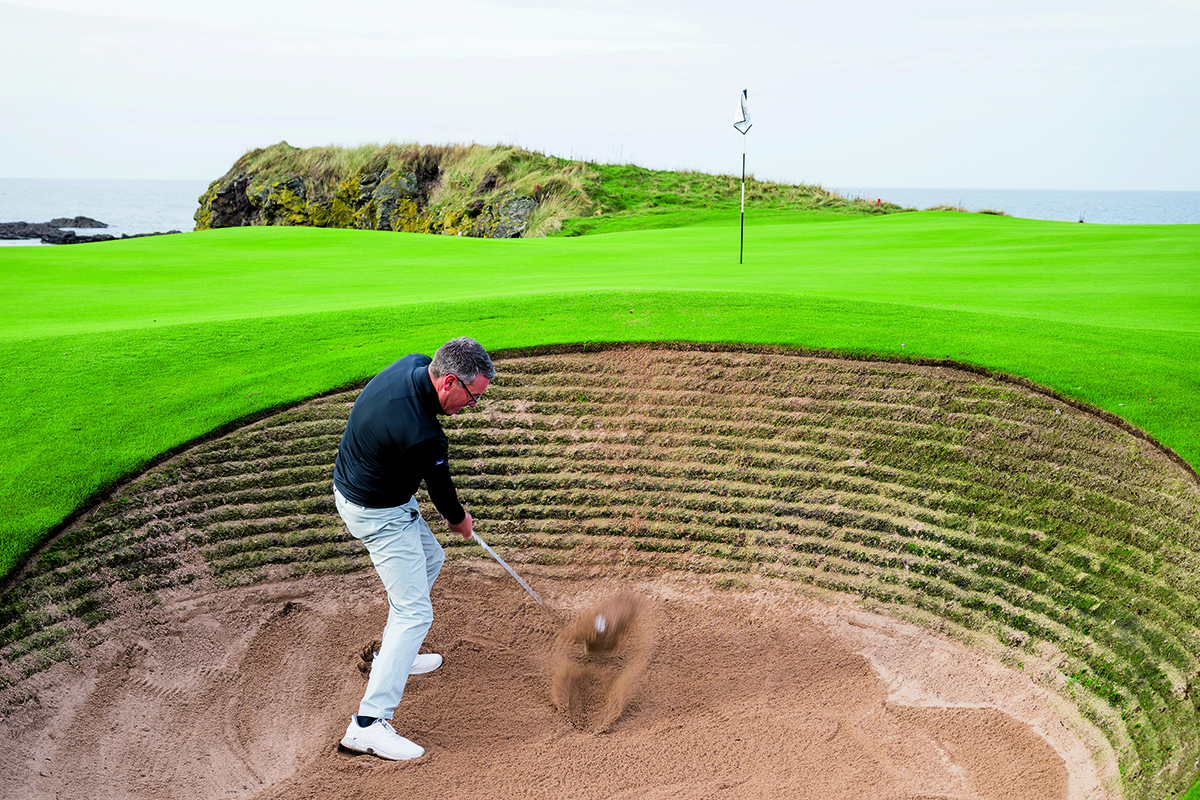
6. Putting Tips
Judging the pace
I always think that it is harder to judge pace than line. However, this does become easier once you’ve learnt to set your ball off on the correct line. It’s then just about marrying the two together.
To get the feel of the pace required on those mid- to long-range putts that club golfers frequently face, I would recommend taking a few practice strokes without focusing down on the ball. Rather, look at the hole and just swing the putter back and through to get a real feel for the length of stroke required to get the ball close to the hole. Your eyes are a huge part of judging distance control through feel.
Start line is key
Club golfers often start the ball on the wrong line, as they don't understand how to effectively read putts. If you start a 40ft putt with four feet of left-to-right break low, it will get worse as it travels, ending up several feet from the hole.
Pace may have been spot on, but as your start line was off, it ends up looking pretty average. Using lines on the ball can help you to read the start line. Practise this as it’s important to be precise. Setting up a couple of tees and rolling the ball through a gate can also improve your strike and help to promote consistency.
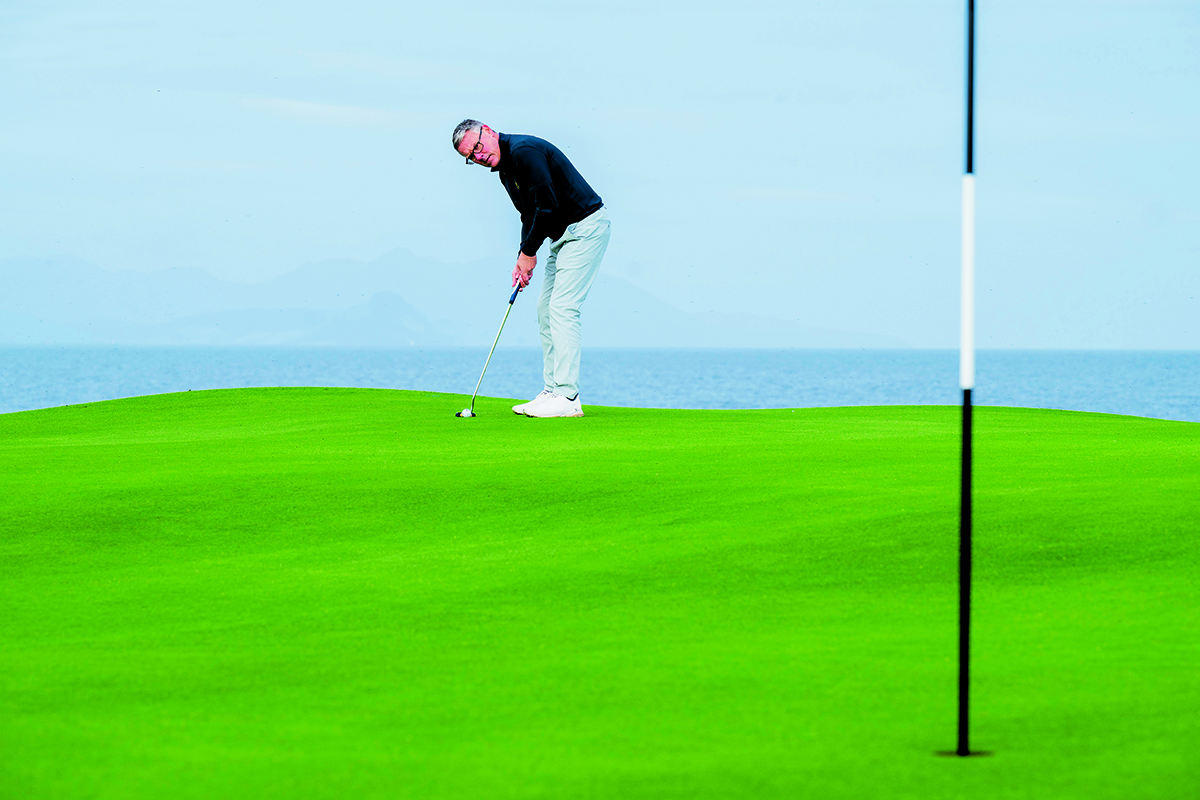
FAQs
Q: What does 'Strokes Gained: Tee to green' mean?
A: This is a measure, used in both amateur and professional golf, to measure a player's performance from the tee box to the green (and everything in between). It's the most all-encompassing metric in the game, measuring the overall quality of a player's performance across all areas of the game by comparing it against the rest of the field (or players of a similar ability across a data set).







